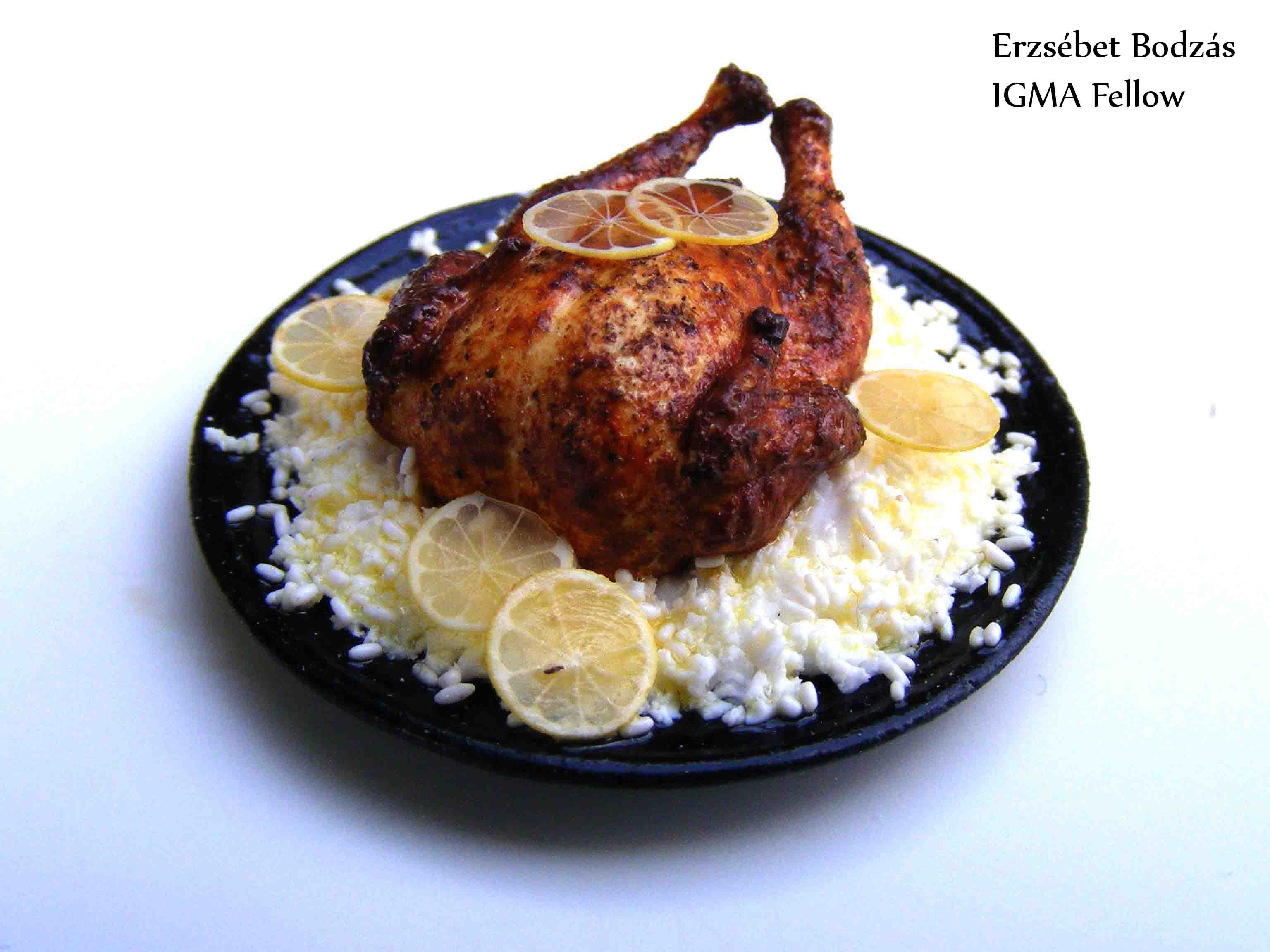Hungarian Miniatures by Erzsébet Bodzás
| Blog | Etsy | eBay | Pinterest |
How did you first get started in miniatures?
I wanted to give my daughters a dollhouse for Christmas but the available ones on the market were so impersonal and way too expensive. I decided to make a dollhouse by myself. 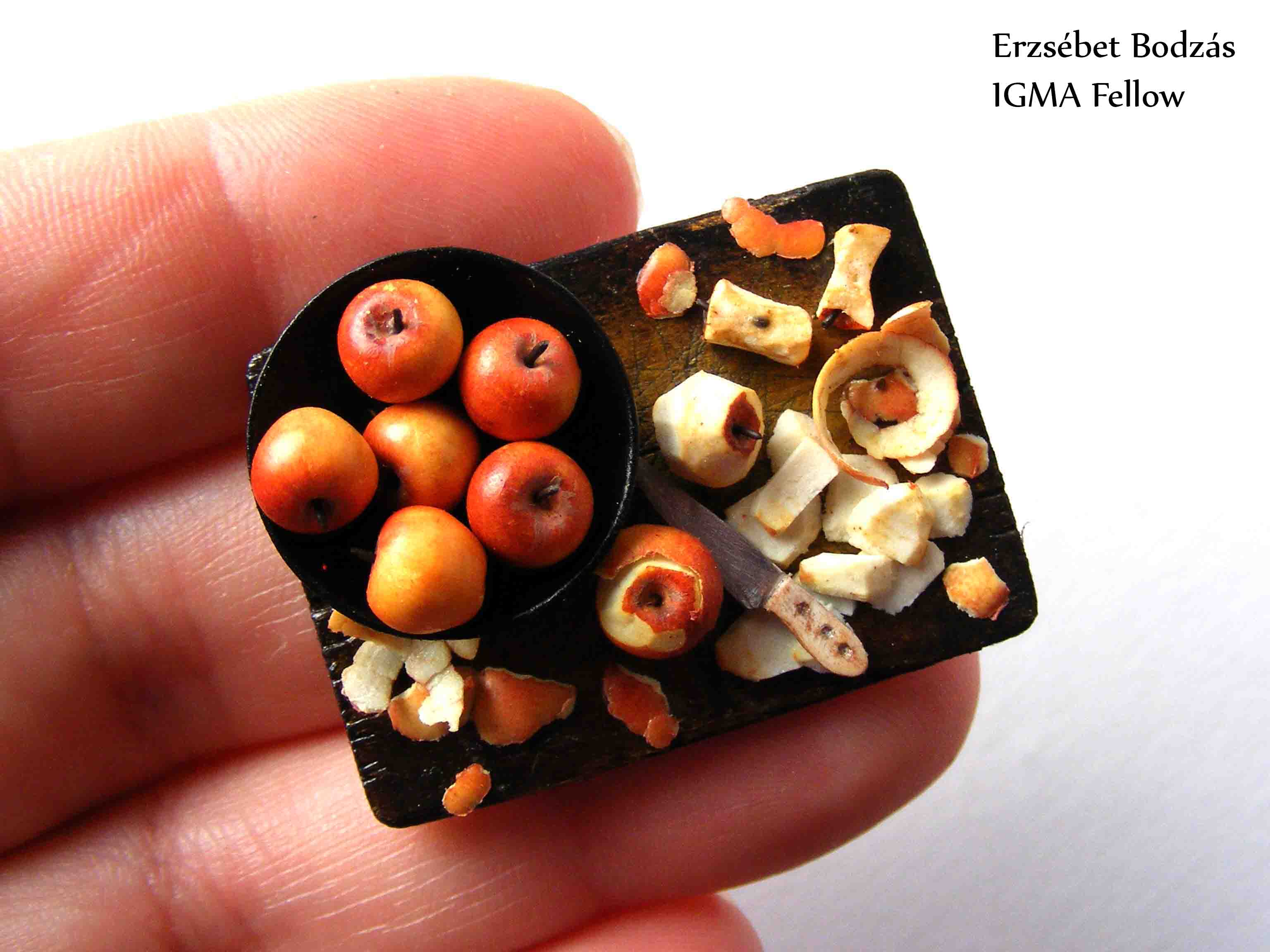 I had no clue how to start, so I started to search on the Internet and I accidentally found some very impressing miniature works. I had never heard about miniatures before. It was love at first sight.
I had no clue how to start, so I started to search on the Internet and I accidentally found some very impressing miniature works. I had never heard about miniatures before. It was love at first sight.
I’ve been making miniatures for five years, and I’m self-trained although I capitalized on everything I could find online. Any time I have aside from caring for my family and my garden, I use working in my workroom.
How has your work in miniatures evolved over the years?
Through the years, I meddled in almost every territory of the miniature world. I made foods, furniture, roomboxes, scenes, and more. Although I enjoy creating all of them, after a serious inner debate, I opted for miniature food making as my specialty. I prefer the traditional homemade foods, rustic breads and pies, heirloom vegetables, and fruits. I also love arranging my foods into little scenes where I can set together the elements like in a three dimensional still life painting.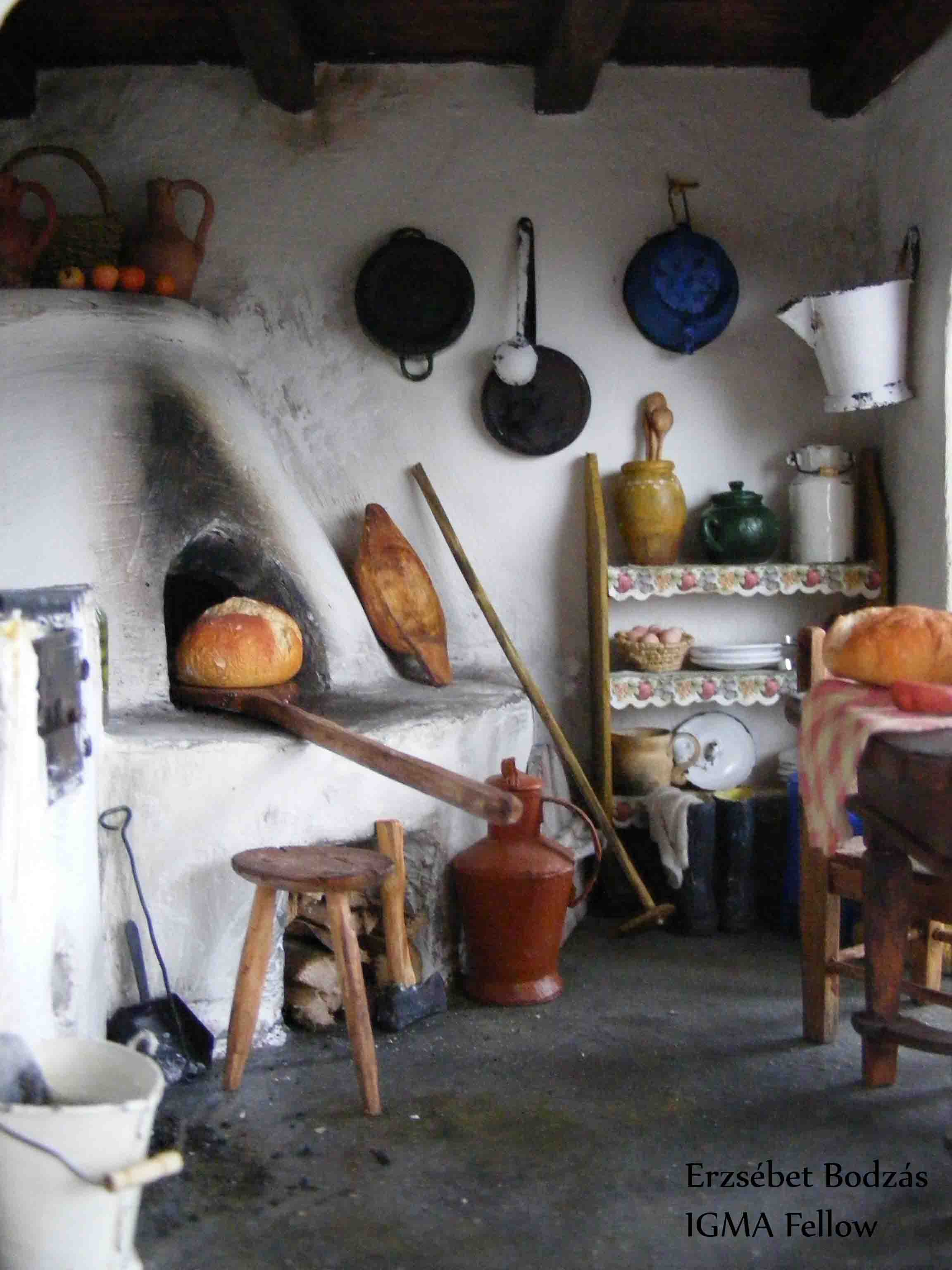
What materials do you use to make miniatures?
I use polymer clay, paper, wood, fabric—practically everything except glass and precious metals. Nowadays my personal favorite is paper. You can’t believe how many things you can do if you have proper templates and apply some layers of acrylic paint.
Advice for new miniaturists?
It’s never the perfection that makes a miniature real, but the natural flaws. I like to show the little imperfections, the brown spots on the apples, the scratches on the fresh pear skin, the pale places of the cucumber where the sun couldn’t reach it. So use your eyes to find the unique features in everything to make it alive.
My X-ACTO knife is my best friend in the workroom, I use more toothpicks than a restaurant, and I am emotionally attached to my lathe tool.
Most treasured miniature you’ve made?
I made an old cottage kitchen with a furnace just like my great grandparents had. I filled it with all the things I remembered from my childhood. It was great to make, and this is the only miniature work I could never part with. It’s in my living room now and I look at it every time I go past it.
What’s been the most difficult miniature to create?
My kryptonite was making early cherries. Half yellow, half red with the slight groove on one side and the thin light green stem. My first attempts were terrible. I tried to get the coloring by applying chalk powder with a brush on the tiny cherry balls. I used polymer clay and wire for stems. 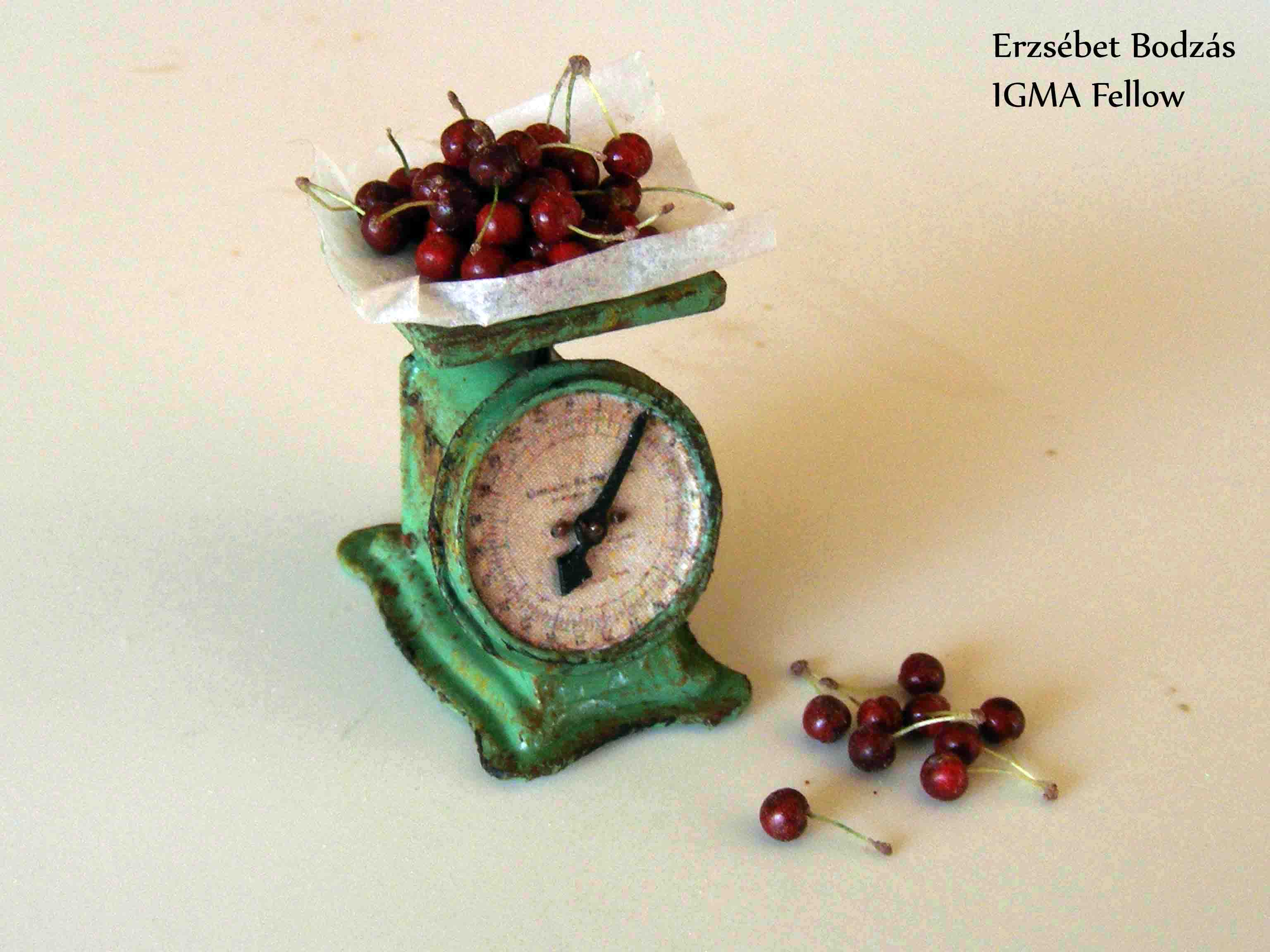 But my cherries were just fake polymer clay cherries, nothing more. It took me three years to figure out my own method to copy nature. Now I brush my palm over with red, orange and yellow chalk powder and I rolled the tiny light yellow balls on it, then press a groove and a hole into them with a pin. The result is a bunch of perfect, various shades of yellow-red cherries. For the stems I use painted sisal fibers. Many times I wanted to give up, but I couldn’t get over it. I had to find a way to make realistic cherries because I had a miniature still life with them in my head and I desperately wanted to make it real.
But my cherries were just fake polymer clay cherries, nothing more. It took me three years to figure out my own method to copy nature. Now I brush my palm over with red, orange and yellow chalk powder and I rolled the tiny light yellow balls on it, then press a groove and a hole into them with a pin. The result is a bunch of perfect, various shades of yellow-red cherries. For the stems I use painted sisal fibers. Many times I wanted to give up, but I couldn’t get over it. I had to find a way to make realistic cherries because I had a miniature still life with them in my head and I desperately wanted to make it real.
Artists you look to for inspiration?
I admire some Russian photographers, Elana Tatulyan (Елена Татульян) and Карачкова Татьяна. Their still life photos are wonderful, just in the same country style I love to try to show in my miniature scenes. Another favorite artist is a Russian painter, Николаев Юрий Викторович, who I like also for his still life paintings.
Fellow miniaturists that inspire you?
My first shock was when I found Kiva Atkinson’s works. I couldn’t believe my own eyes. I didn’t know it’s possible to make such realistic foods in miniature. The quality of her miniatures was a real goal to reach in my own works.
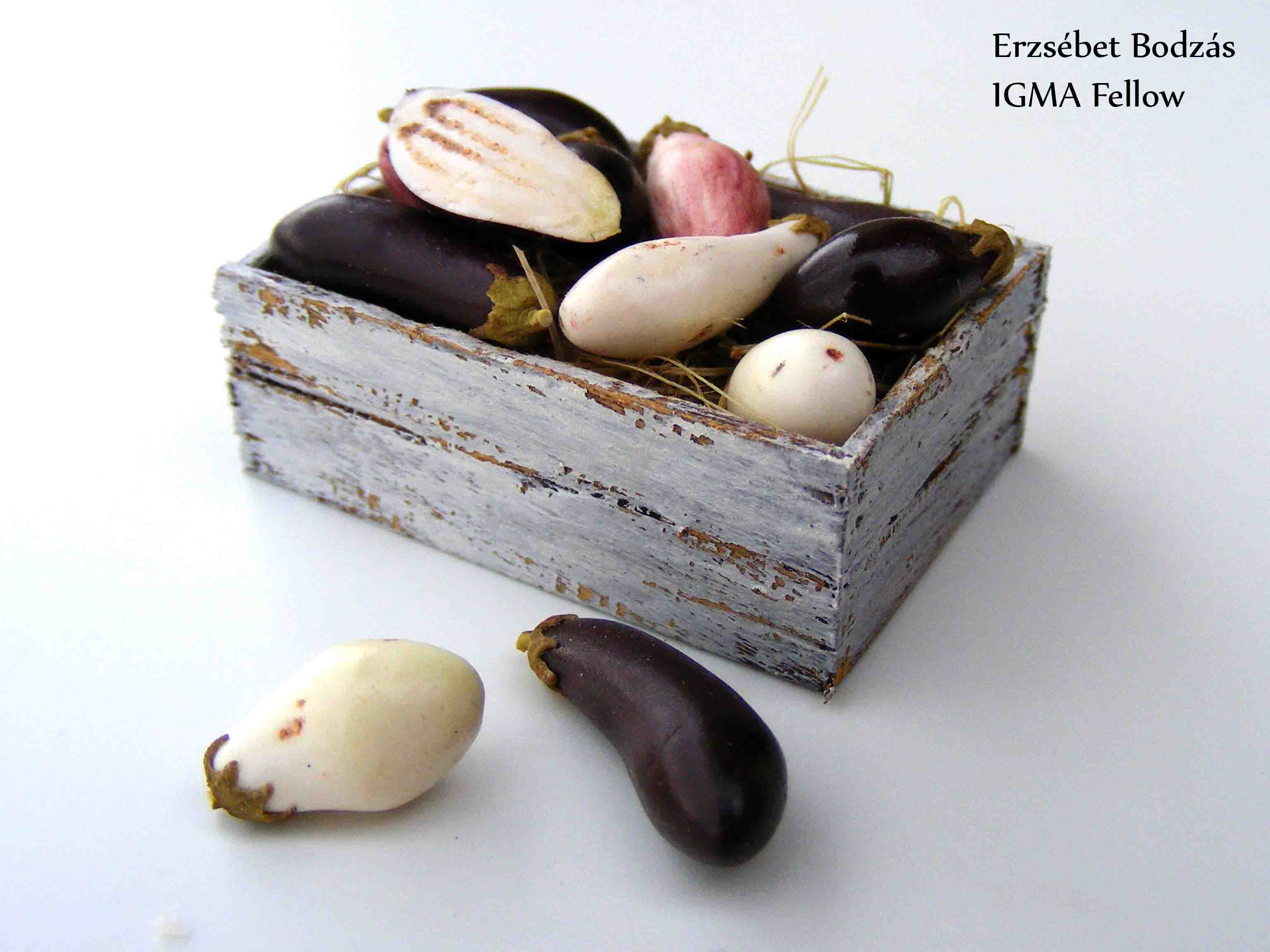 And I think everyone just loves Tomo Tanaka’s Nunu’s House and his miniature foods. I still think there is a magic wand involved.
And I think everyone just loves Tomo Tanaka’s Nunu’s House and his miniature foods. I still think there is a magic wand involved.
What is the most memorable miniature you’ve seen?
Lori Nix‘s miniature scenes are a fantastic mix of art and precise engineering. Choosing the post-apocalyptic world as a theme is very interesting. Her dioramas could be sad, but they are oddly invigorating and sometimes humorous for me.
Why miniatures?
I feel like a genie in a bottle or a wizard with a wand. I’ve always been a creative person. If I had time and money in limitless amount, I would try every craft in the world. I would make furniture, pottery baskets, and more. Since I’m not that lucky, I had to find a close enough substitute. In miniature, I could do anything I couldn’t do in real size.
Upcoming news you’d like to share?
I’m one of the five new IGMA Fellow members that the International Guild of Miniature Artisans (IGMA) elevated this year. That means a lot to me. I worked hard on my miniatures application, and fortunately it paid off.
There’s an exhibition in October in Budapest where some miniaturists including myself show their works. This will be my first exhibition, so I’m very excited about it.
Other hobbies you enjoy?
My other love is my garden. Actually I’m a landscape architect, but after the births of my daughters, I couldn’t work as an engineer in an office anymore. The necessary overtime, the travelling and the stress of imminent deadlines couldn’t work for me as a mother. But my green thumb still exists and I spend long hours in my garden almost every day.
IGMA Fellow Erzsébet Bodzás lives in Hungary. You can shop her work in miniature on Etsy and eBay. Check out her latest work on her “My Tiny World from Hungary” blog or Pinterest.
